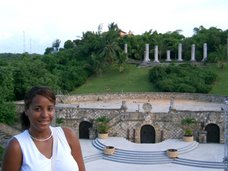Chapter 9
Introducing the “New Literacies” to children in primary school is most beneficial for it lays the ground work for their success when using the Internet in their later education. The decisions that teachers make about introducing internet use in the classroom should be accommodated in accordance with the child safety guidelines. This chapter provides a number of ideas to assist with this and finding resources that will be useful when working with young children. The goal is for teachers to be able to design and share a series of workshop activities for young children, take part in online projects, make judgments about how well each website helps students learn, and describe instructional strategies to foster young children’s understanding. One classroom example demonstrates how the internet contains many fine resources for young learners and it mentions how the students had many important experiences with stories, letters, writing, and learning skills. I particularly liked the part where the teacher began the lesson with the message of the day that she read from the internet. Kids were engaged and they wanted to know what each word meant. The use of technology also helped her kids identify and learn the color names quickly; she used KidPix software to display colorful information. Also she always showed webpages that did not have advertisements. She shows the Magical Kingdom webpage to ensure child safety.
Primary kids should also be taught basic navigation strategies. Taking the time to teach these basic skills such as hyperlinks, bookmarks, mouse skills, and other emerging navigation strategies will ensure their continued success in this area. This can only be achieved by allowing them to navigate between webpages. It could be as easy as allowing them to visit a site to practice the alphabet. By dragging one letter children quickly understand the basic skills of scrolling, viewing links, selecting sections of that site, and much more. Consequently, this will then help young kids develop the new literacy strategies required to locate information on the internet. Working with children in primary grades requires special attention to small details that will ensure the best use of what the internet has to offer.
Once young kids become familiar then the task could be a little bit more challenging. For instance, young learners could keep an internet writing journal throughout the year that they can share every other week in class. This simple and easy tool will allow teachers to track their students’ writing skills and developments. The book suggests the use of Chateau Meddybemps among others. Furthermore, these young learners could learn how to collaborate with one another and other classes as well. Websites such as The Mind’s Eye Monster Exchange Project and The Monarch Watch allows students to create and keep track of their creations. Webquest is a great tool because it is a more structured place where the students can work alone or in groups. The most important part of all is that young learners develop their navigation skills and begin to know how to acquire useful information on the web.
There are many sources on the internet that will help our young learners acquire navigation skills. It is very important children develop these skills as early as possible so that when they get into secondary education they will be able to use the tools that are already being implemented. I have 6th, 7th, and even some 8th graders who I feel have not had adequate training in simply navigating the internet. I have taken these classes to the computer lab and I have spent a lot of time educating them in basic technological skills such as logging in, typing the address correctly without spaces, scrolling up and down, and using the back key, among others. In general, online-based projects help students to practice and apply strategies that are part of the five elements required for the new literacies. They will allow them to identify important questions, navigate complex information, critically evaluate that information, synthesize it to address those questions, and then communicate the answers
Tuesday, March 11, 2008
Tuesday, March 4, 2008
A Tribute to Our Teacher
A Tribute to Our Teacher is a video that I found on Teacher Tube. In this video, High School Spanish students pay tribute and give thanks to their teacher, Amy Haney. It was created by Jesse Depinto. I found this video to be very interesting and creative. The video is divided into sections; each devoted to give thanks to the teacher for something learned in the Spanish class. It presents several clips from activities that the students did in class. I was amazed to see how involved the students were. These activities, including typical games, reminded me of those that I played as I grew up in the Dominican Republic. More importantly, it reminded me of many games and activities that I can integrate into my instruction to engage students in the learning of a foreign language. Through this video, I learned to admire the teacher as well. She seems to be a very dedicated teacher willing to do whatever it takes to help her students learn Spanish. Also, this video provided me with further resources such as, www.sparkenthusiasm.com, a website that she created which contains links to many other resources that Spanish teachers can utilize to make learning process more enjoyable for all.
Subscribe to:
Posts (Atom)

